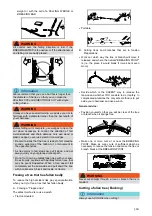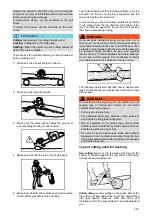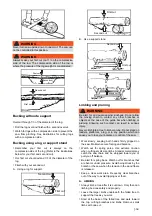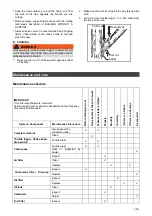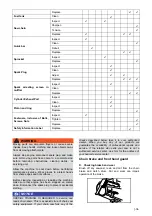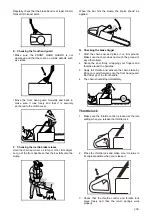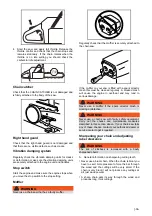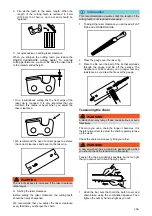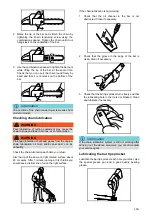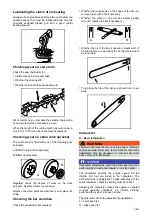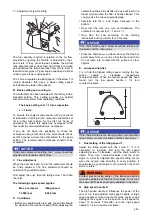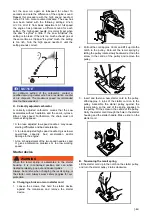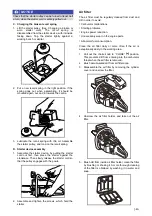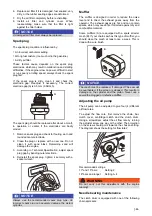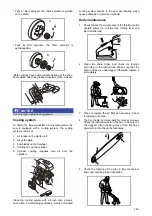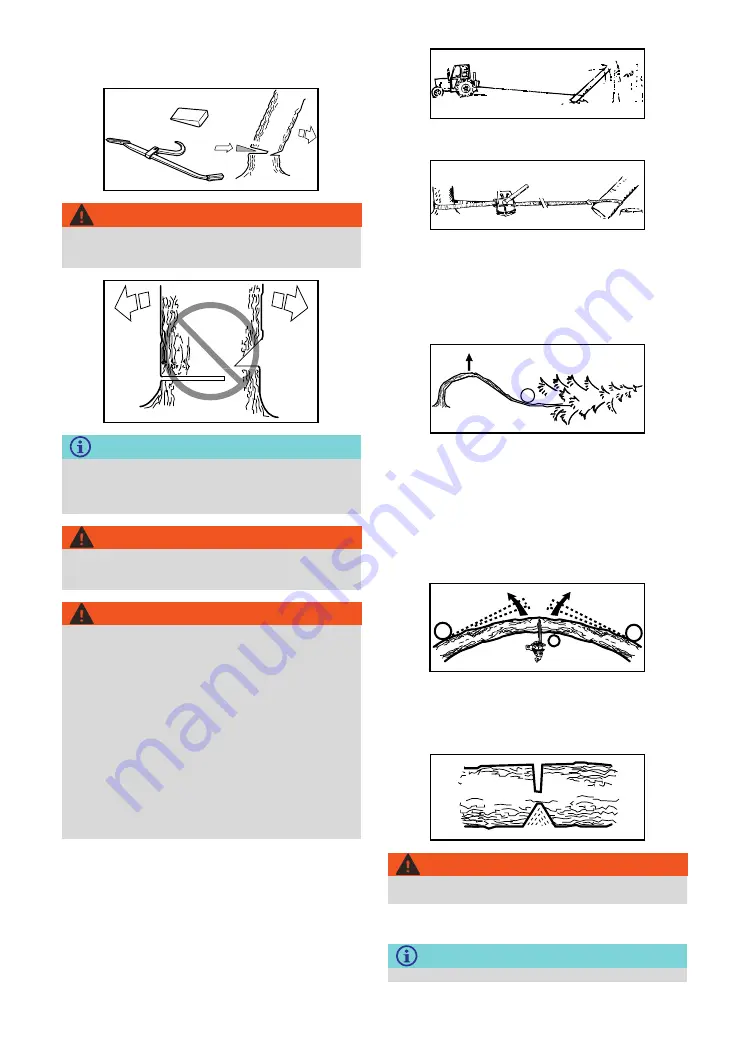
|
-30-
weight or with the aid of a FELLING WEDGE or
BREAKING BAR.
WARNING
All control over the felling direction is lost if the
BREAKING STRIP is too narrow or if the directional cut
and felling cut are badly placed.
information
We recommend that you use a bar that is longer than
the diameter of the tree, so that you can make the
FELLING CUT and DIRECTIONAL CUT with single
cutting stokes.
WARNING
Unless you have special training, we advise you not to
fell tress with a diameter larger than the bar length of
your chain saw.
WARNING
Before felling cut is complete, use wedges to open the
cut when necessary to control the direction of fall.
Avoid kickback and chain damage, only use wood or
plastic wedges, never use steel or iron wedges.
•
Be alert to signs that the tree is ready to fall: cracking
sounds, widening of the felling cut, or movement in
the upper branches.
•
As tree starts to fall, stop saw, put it down, and get
away quickly on your planned retreat path.
•
Do not cut down a partially fallen tree with your saw.
Be extremely cautious with partially fallen trees that
may be poorly Supported. When a tree doesn’t fall
completely set the saw aside and pull down the tree
with a cable winch, block and tackle, or tractor.
Freeing a tree that has fallen badly
To reduce the high accident risk, pay special attention
when you try to free a tree that has fallen badly.
A. Freeing a "Trapped tree"
The safest method is to use a winch.
-
Tractor-mounted
-
Portable
B. Cutting trees and branches that are in tension
Preparations:
-
Work out which way the tree or branch will move if
released and where the natural "BREAKING POINT"
is (i.e. the place it would break if it was bent even
more).
-
Decide which is the SAFEST way to release the
tension and whether YOU are able to do it safely. In
complicated situations the only safe method is to put
aside your chain saw and use a winch.
General advice:
-
Position yourself so that you will be clear of the tree
or branch when it springs free.
-
Make one or more cuts at or near the BREAKING
POINT. Make as many cuts of sufficient depth as
necessary to reduce the tension and make the tree or
branch break at the BREAKING POINT.
WARNING
Never cut straight through a tree or branch that is in
tension!
Cutting a fallen tree (Bucking)
information
Always use full throttle when cutting!
Summary of Contents for NT6260
Page 52: ...WWW CRAFTOP COM ...















